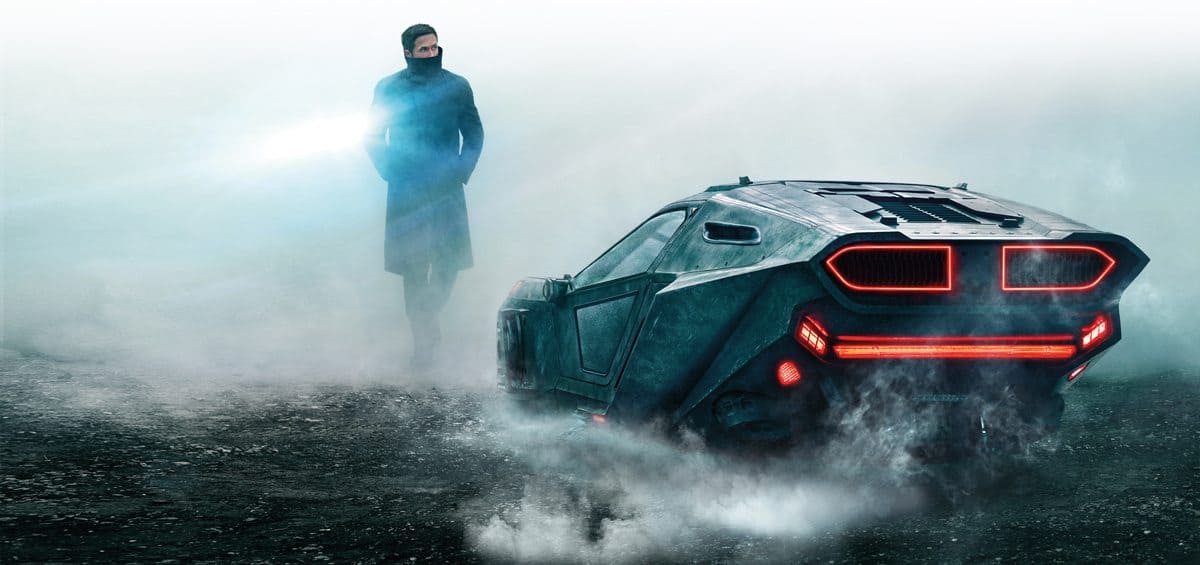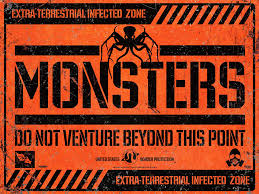Blade Runner 2049 was directed by Denis Villeneuve and is the 2017 sequel to the critically acclaimed sci-fi noir, Blade Runner, originally released in 1982. The film follows Officer K, played by Ryan Gosling, as he discovers a mystery which could change the way humanity sees artificial life forever. The film was released to critical acclaim with an 87% Rotten Tomatoes score and an 8/10 audience score on IMDb.

Marketing
There have been brand partnerships and even an upcoming mobile game to market the film. In 1982’s Blade Runner, the entertainment company Atari was heavily featured in the world among advertisements and technology that characters saw and used within the film. In 2049, Atari advertisements return, despite the company’s fall from popularity. Michael Arzt, CEO of Atari Connect said that 2049 has allowed the brand to connect with audiences aged 35 or older who may have grown up with the popular games console Atari 2600 which was featured in the sequel’s predecessor.
“Fast forward to today’s youth, and so much of what Atari and Blade Runner represented back then is benignly taken for granted by this generation,” said Arzt. “To them, gaming and technology have always been there. Today’s teens never knew a world without internet, smartphones and other tech. Whether it’s the awesome new Blade Runner 2049 film that is looking to reboot the legendary film into a franchise, Atari’s new Ataribox, re imagined games like Tempest 4000, or wearable tech like the cool new Atari Speakerhats, both brands are looking to appeal to this new generation while also maintaining a bridge to the fans that helped make them cool in the first place.”
Virtual Reality
The brand Johnnie Walker, featured in the original film and sequel, also partnered with the marketing team behind 2049. They helped create an immersive VR experience at San Diego Comic-con called Blade Runner: Replicant Pursuit, where players entered a Los Angeles 2049 street, complete with actors, a noodle bar and samples of Johnnie Walker whisky.

Product Placement
As well as Johnnie Walker products being placed in 2049 itself, they also released a limited edition whisky called Johnnie Walker Black Label The Director’s Cut. The bottle was picked by 2049‘s director, Denis Villeneuve. The brand is often drunk my Harrison Ford’s character, Deckard.

Advance Publicity
To promote the film, three short films were uploaded to social media that led up to 2049.
The first is the animated Blade Runner 2022: Lights Out, documenting the referenced “Blackout” in 2049. It is directed by Shinichirô Watanabe, director of Cowboy Bebop.

The second is Blade Runner 2036: Nexus Dawn, starring Jared Leto’s character, Niander Wallace. He forces a repeal of the act banning replicants by showing how they are fully compliant with his demands.

The third is Blade Runner 2048: Nowhere to Run, starring Dave Bautista’s character, Sapper Morton. It is directed by Luke Scott.

Social Media
The Academy Award winning cinematography by Roger A. Deakins was praised on social media, generating buzz for the film. People could also insert themselves into the official movie poster via the website. Warner Bros also created a Snapchat World Lens which dressed users in a hoodie and plunged them into the neon-clad, dystopian streets of 2049 LA. Snapchat took the world lens and opened it up to brands. They announced the availability of the new advertising product on stage at Advertising Week New York, along with launch partners Warner Bros, who used branded 3D World Lenses as part of their marketing campaign. 3D creations from the film, like the “Spinner” driven by Officer K, can be placed in the real world using augmented reality technology.

Production
London-based Territory Studios used Cinema 4D software to produce screen graphics and concepts. Cinema 4D has played a key role on high-profile VFX projects such as Avengers: Age of Ultron and Guardians of the Galaxy.
“Cinema 4D and X-Particles were used to successfully produce screen burn, ghosting, glitching and colour degradation that brought an organic, chaotic nature to the aesthetic of the textural effects to let us show the audience that due to his low status, K is managing with outdated technology,” said Peter Eszenyi. “We also crafted fly through animations of the minimalist particle landscape that were based on the shots that were put onto the screen, rendered and processed through After Effects.”
The special effects in 2049 were so ground-breaking, they won an Academy Award for Best Visual Effects.

Format
Film studios used to market the 3D format as the best way to watch a film, such as Avatar (2009), but now the IMAX format has become more popular, but also more expensive. 3D is not as popular as it used to be.
Cinematographer Roger Deakins encouraged people to watch the film in 2D, saying this:
“My preferred version is the standard 2D widescreen version. A problem I have with some viewing systems is their use of silvered screens. The image projected on a silvered screen lacks saturation as well as density as it falls off from a hot spot in the centre of vision. This may not be so apparent for someone sitting in the optimum viewing seat but it is a compromise in terms of image quality wherever you are seated, though it maybe a compromise worth accepting if you are a fan of 3D.”

So – why did Blade Runner 2049 struggle at the box office?
With only a domestic total gross of $92 million (October 2018) and a first weekend gross of $32 million, compared to the $150 million production budget, 2049 failed in the eyes of Warner Bros executives. The problem is one of marketing – in spite of studio efforts to transform the Blade Runner brand from art-house cult classic to mainstream tent-pole film starring Ryan Gosling only appeals to one quadrant: adult males. The film’s marketing strategy, which kept the film’s plot mostly under wraps, failed to provoke interest in any quadrant outside the film’s limited built-in audience.
Compared to Happy Death Day
Blumhouse Pictures has been very successful with low-budget horror films like Get Out (2017) and Happy Death Day (2017). The horror/comedy wide genre appeals to not only adult males but particularly with females under 25 as well. Adverts for the film appeared in front of popular TV shows like American Horror Story, with a similar target audience to the film. The YouTube trailer has also been viewed over 157 million times due to being played over many other YouTube videos. While Happy Death Day only has a domestic total gross $55 million, lower than 2049, compared to its small $4.8 million budget, it certainly is an achievement for Blumhouse.

In conclusion, Blade Runner 2049 is an incredible, ground-breaking, critically acclaimed film and will undoubtedly develop a cult following over the years, but will unlikely get a sequel any time soon due to its poor performance in the box office.

















